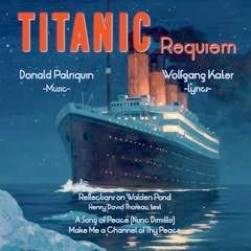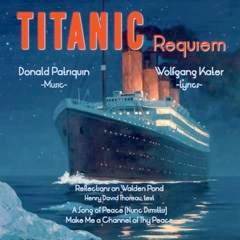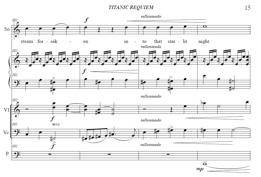Scored for SATB choir, soprano and cello soloists, string quartet, piano & contra bass
Titanic Requiem, Choral music for choir, soloists and instruments, was written in commemoration of the sinking of the Titanic in 1912 in which over 1500 lives were lost. The work is as much a homage to the ship itself as to its passengers and crew. It is also a warning for our time: “Ice-fields loom large in our dark night…”
For the Lyrics and Program Notes to Titanic Requiem, please click here
Titanic Requiem, Choral music for choir, soloists and instruments, was written in commemoration of the sinking of the Titanic in 1912 in which over 1500 lives were lost. The work is as much a homage to the ship itself as to its passengers and crew. It is also a warning for our time: “Ice-fields loom large in our dark night…”

My own connection to the Titanic, aside from having composed music for it, is an historical one - a boy from my school (Bishop's College School) was given a ticket to return home on the Titanic after the Easter holidays. His school mates never saw him again.








